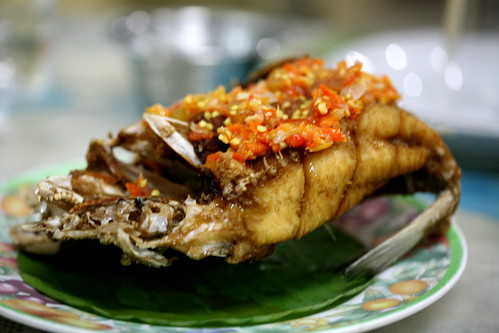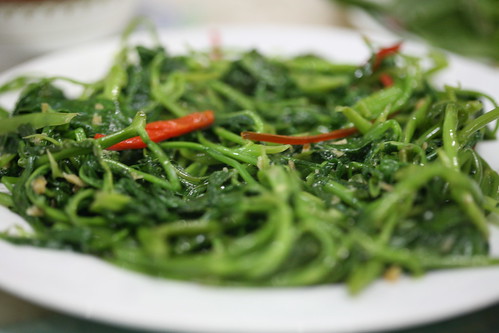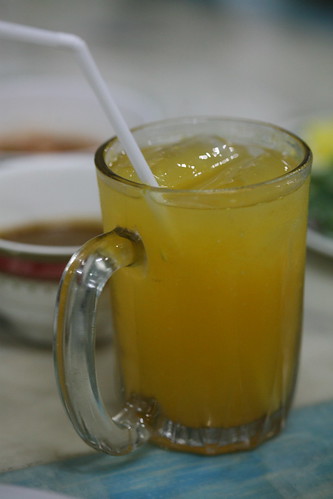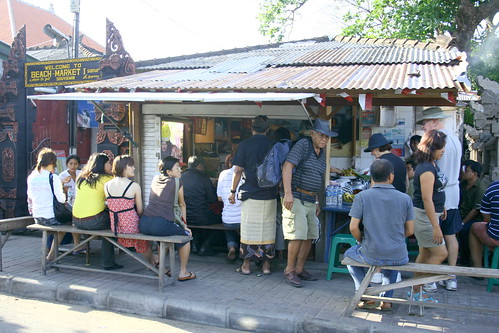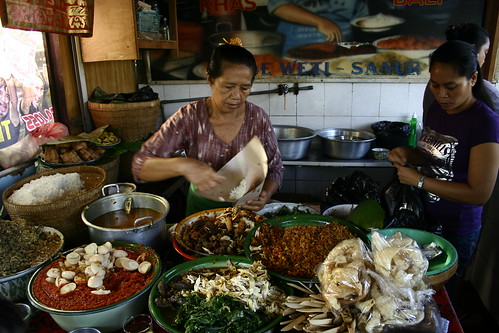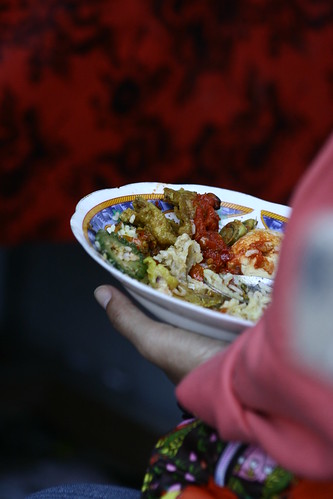Chili is not for the weak. When I first came to Indonesia in 1993, I am your typical foreigner, wary of any spice, scared of a hint of pepper. I even cannot have hot catsup with my burger. Imagine my pain and torment of attempting to skim through the menus for local un-”spicy” food (never easy!) and requesting the cook that no chili gets into my food (dream on!). Needless to say, I lost. Chili is part of Indonesian cuisine and removing it from food excises its soul. Slowly, progressively, my tolerance for chili builds up. It had to or I would not have survived. Within two years, I suddenly found myself to be a convert, without me knowing it. To my surprise, what used to shock my palate would be cause for gustatory excitement.
Visiting Bali cannot be complete without indulging in local spicy traditional food. I always have to get my chili high. Among the myriad choices of hot delicacies that define Balinese and Indonesian cuisine, I am putting here my basic 5. These are my several must haves, from traditional Balinese food like roast pig (babi guling), spicy duck (bebek betutu) and spicy fish to transplanted favorites like Padang food and Lombok’s Taliwang chicken.
When in Bali, you’ve got to check them out!
1. favorite roast pig: Babi Guling Ibu Oka (Ubud). Indonesia is a predominantly Muslim nation and Bali is its Hindu enclave. Therefore, it would only be in Bali where pork of any kind can be displayed in abandon without offending cultural sensibilities. And the queen of pork dishes in Bali is babi guling. This Balinese roast suckling pig version is known for its spices and the traditional way it is served. Unlike the Philippine lechon which is displayed whole on the table, the babi guling is served chopped, with samplings of pork parts- the crispy skin, the succulent meat, entrails, spicy vegetable mix- given to the diner. Another major difference is the plethora of spices. Think of candlenuts, chilies, garlic, ginger, galangal, lemon grass, pepper coriander, shallots, turmeric, even cassava leaves. The best in Bali has got to be the warung (small stall) of Babi Guling Ibu Oka in Central Ubud/Puri Ubud. The queue is always endless and getting a table is an art. Here the baby pig is reputedly roasted over corn husks for five hours before being served piping hot to the customers.

Canon EOS 350D Digital, 1/100s, f/4.0, 18mm, ISO 200, +1/3EV
a typical crowd at the Ibu Oka restaurant, Central Ubud, Bali, Indonesia
2. favorite duck betutu: Bebek Bengil (Ubud). This famous spicy duck (bebek) dish is either steamed or roasted. A favorite among gourmets, the meat is flavored with exotic taste and aroma. Different regions have various varities. I love Gianyar’s betutu which is wrapped in banana-leaf. Like the babi guling, betutu is infused with numerous spices like shallots, garlic, lemon grass, lime leaves, candlenuts, ginger, turmeric, kencur, black peppercorns, bird's-eye chilies, coriander seeds and shrimp paste. One of the most popular restaurants offering this delicacy is again found in Ubud, the Bebek Bengil in Jln Monkey Forest .
3. favorite spicy chicken: Ayam Taliwang. This is not Balinese but a delicacy of Lombok, the island east of Bali. It is native spring chicken that is traditionally rolled in chili and grilled. The chicken here is among the hottest in Indonesia and even the toned-down plain version will make the unattuned eater cry. According to sources, the dish is named after Karang Taliwang, a subdistrict in Mataram where the recipe was created in 1970 by H. Abdul Hamid. The original recipe calls for 3-month-old free-range chickens, which is not too tough or too tender. Bali boasts of a branch of the original Rumah Makan (R.M.) Taliwang at Jln Teuku Umar, Denpasar. It is the real deal. Don’t miss ordering pelicing/plecing kangkung or native water spinach in tomato-chili relish.

Canon EOS 350D Digital, 1/80s, f/2.8, 100mm, ISO 1600, -1/3EV
ayam taliwang (spicy spring chicken Taliwang-style), R.M. Ayam Taliwang, Denpasar, Indonesia
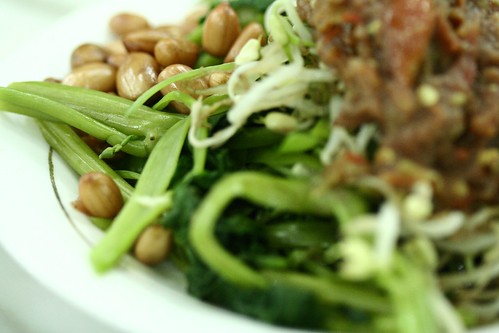
Canon EOS 350D Digital, 1/40s, f/2.8, 100mm, ISO 1600, -1/3EV
the popular plecing kangkung side dish of R.M. Ayam Taliwang, Denpasar, Indonesia
4. favorite Padang food: Minang Saiyo. Arguably the most unique serving style in Southeast Asia is that of Padang cuisine in Sumatra. There are no menus for all the cooked dishes, often spicy, are served in every table, in individual portions. Piled on top of each other like a pyramid, the bowls boast the gamut of Muslim halal dishes, from seafood to vegetables to chicken and beef. Be conscious of the etiquette: you will pay only for what you eat. Please set aside bowls that you have touched so that they may not be offered to the next table. When in Bali, I always try to visit my favorite Minang Saiyo in Jln Bypass Ngurah Rai.
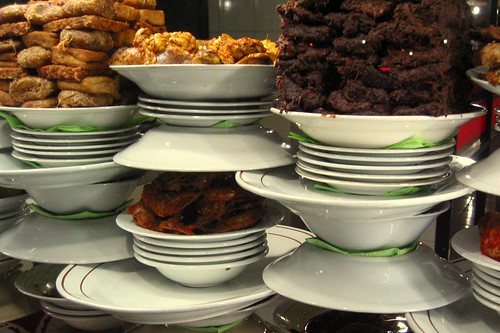
cooked food display at the Minang Saiyo restaurant, Kuta, Bali, Indonesia
5. favorite spicy fish: Mak Beng. Another legendery local eatery is the Warung Mak Beng in Jln Hang Tuah, Sanur. Run by the nearly 90-year-old Mak Beng, or Ketut Tjuki, the restaurant opened in l941 just across the Grand Bali Beach Hotel, the first five star hotel in Bali. The eatery does not have any flashy fare, just fish soup, or fish that is fried or grilled, using secret sauces if chili and spices (sambal). The chili factor is way up in the hotness scale so this is not for the meek. Mak Beng has rabid fans. I have an Indonesian-Chinese friend in Surabaya, who would go to Bali for a day trip just to eat at Mak Beng, then go back home happy and full.
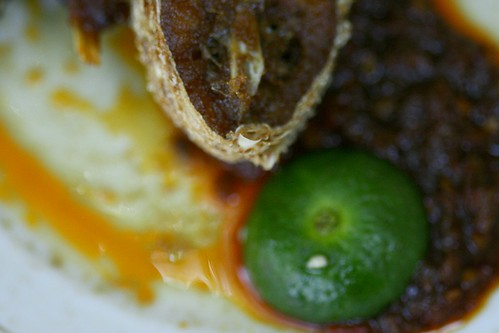
Canon EOS 350D Digital, 1/160s, f/2.8, 100mm, ISO 800, -2/3EV
fried fish with hot chili of Mak Beng, Sanur, Bali, Indonesia
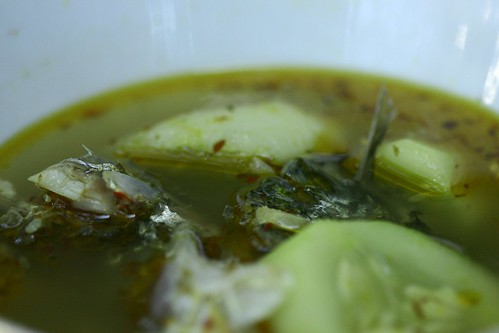
Canon EOS 350D Digital, 1/660s, f/2.8, 100mm, ISO 800, -2/3EV
the hot fish soup of Mak Beng, Sanur, Bali, Indonesia



